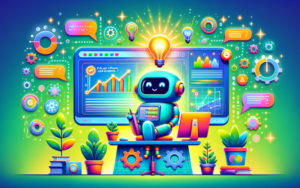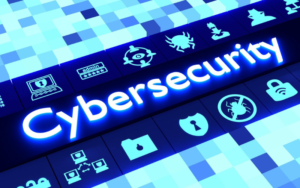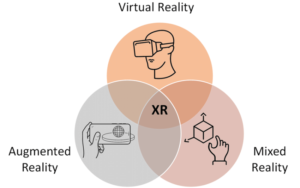Imagine a world where your coffee pot brews automatically before your alarm goes off, your thermostat adjusts based on your preferences, and your smart lock recognizes you as you approach your door. This isn’t science fiction – it’s the reality of the Internet of Things (IoT), a rapidly growing network of interconnected devices transforming our homes, cities, and industries at an unprecedented pace. From smartwatches monitoring our health to smart appliances streamlining our routines, the IoT is weaving itself into the fabric of our daily lives, offering a glimpse into a future where technology seamlessly integrates with our physical environment.
As technology continues to advance at an unprecedented pace, so does the need for systems that can leverage these advancements to improve health and wellness. This article provides an extensive exploration of IoT and connected devices, their growing significance in our lives, and the impact they’re making on our approach to health and wellness.
Beyond Gadgets: Unveiling the Power of the IoT:
The IoT is not just about fancy gadgets; it’s about connectivity and data. By embedding sensors and communication chips into everyday objects, we create a network where these devices can collect data, communicate with each other, and respond to our commands or environmental changes. This vast network of data holds immense potential, impacting various aspects of our lives:
Smart Homes: Imagine a home that anticipates your needs. Smart thermostats learn your temperature preferences, lights adjust automatically based on the time of day, and appliances communicate with each other to optimize energy consumption. The IoT is revolutionizing how we manage our homes, creating a more comfortable, efficient, and personalized living experience.
Connected Cities:
Imagine cities that optimize traffic flow, manage waste efficiently, and monitor air quality in real-time. By connecting sensors to traffic lights, parking meters, and environmental monitoring systems, cities can gather valuable data to improve infrastructure, reduce pollution, and enhance the quality of life for residents. This transformation towards “smart cities” holds immense potential for creating more sustainable and livable urban environments.
Revolutionizing Industries:
Imagine factories that optimize production based on real-time data, farmers who monitor their crops remotely, and healthcare providers who track patient vitals from anywhere in the world. The IoT is transforming industries by enabling data-driven decision making, improving operational efficiency, and fostering innovation in sectors ranging from manufacturing and agriculture to healthcare and logistics.
Unveiling the Challenges: Security, Privacy, and the Digital Divide:
While the potential of the IoT is undeniable, challenges need to be addressed to ensure its responsible and sustainable development. Security remains a major concern, as interconnected devices create new attack vectors for hackers. Privacy issues arise with the vast amount of data collected by these devices, necessitating robust data protection measures. Additionally, the digital divide risks excluding certain populations from the benefits of the IoT, requiring strategies for inclusive access and affordability.
The Future is Connected: Embracing the Potential, Navigating the Challenges:
The IoT is undoubtedly shaping the future, and its impact will continue to grow exponentially. By embracing its potential while proactively addressing challenges, we can harness the power of connected devices to create a smarter, more efficient, and sustainable world. Security protocols, robust privacy regulations, and inclusive access initiatives are crucial to ensure the responsible and equitable development of the IoT. Remember, the future is connected, and it’s up to us to ensure it’s a future for everyone.
Unraveling the Concept of IoT and Connected Devices
The Internet of Things (IoT) refers to the network of physical devices, vehicles, appliances, and other items embedded with sensors, software, and network connectivity, which enables these objects to connect and exchange data. Connected devices are the building blocks of IoT, providing the interface between the physical and digital worlds. These devices can range from everyday household items like refrigerators and thermostats to industrial machinery and even city infrastructure.
The Ascendancy of IoT and Connected Devices
The rise of IoT and connected devices is a testament to the transformative power of technology. The proliferation of smartphones and broadband internet has made it easier than ever for devices to connect and communicate. Meanwhile, advances in sensor technology and data analytics have opened up new possibilities for device functionality and intelligence. The ongoing digital transformation across industries and the increasing demand for smart and connected devices have further fueled the growth of IoT.
The Multifaceted Impact of IoT and Connected Devices
IoT and connected devices are transforming various sectors, from healthcare and manufacturing to retail and transportation. For individuals, connected devices offer a way to monitor their health, manage their homes, and enhance their lifestyle. For businesses, IoT provides solutions to improve operational efficiency, enable innovation, and create new business models. For society at large, IoT holds the promise of addressing major societal challenges, from improving traffic congestion and air quality to enhancing public safety and resource management. The impact of IoT extends beyond the individual, shaping public health policies and practices.
Navigating the Challenges and Opportunities in IoT and Connected Devices
Despite its potential, IoT also presents several challenges. These include issues related to data privacy and security, interoperability, and scalability. However, these challenges also represent opportunities for innovation and improvement. By addressing these challenges head-on, we can unlock the full potential of IoT and pave the way for a healthier future.
Envisioning the Future of IoT and Connected Devices
As we look to the future, the potential of IoT and connected devices is immense. Key trends shaping the future of IoT include the convergence of AI and IoT, the rise of edge computing, and the growing focus on sustainability. These trends will require ongoing innovation and collaboration among various stakeholders, including tech companies, device manufacturers, service providers, and consumers.
Conclusion
IoT and connected devices represent a transformative force in the digital age. As technology continues to advance, the potential of IoT to improve our lives and society is immense. However, realizing this potential will require addressing the challenges that lie ahead and leveraging the opportunities that these challenges present. As we navigate this exciting journey, one thing is clear: the future of IoT is here, and it’s more connected than ever.





